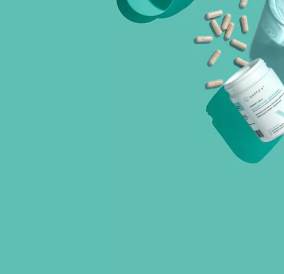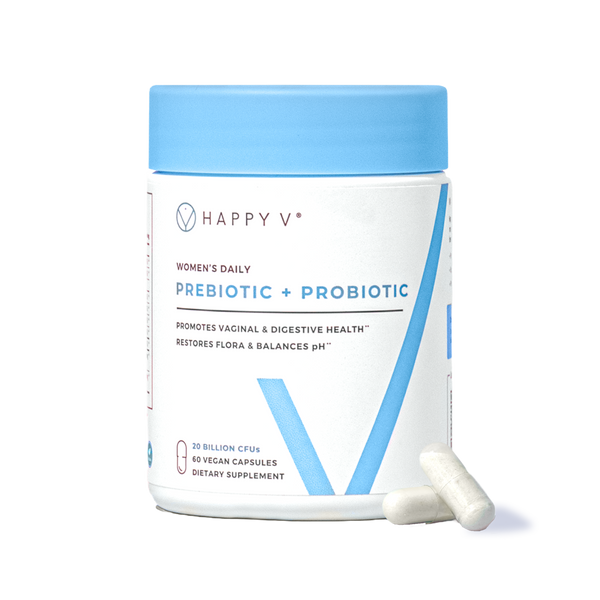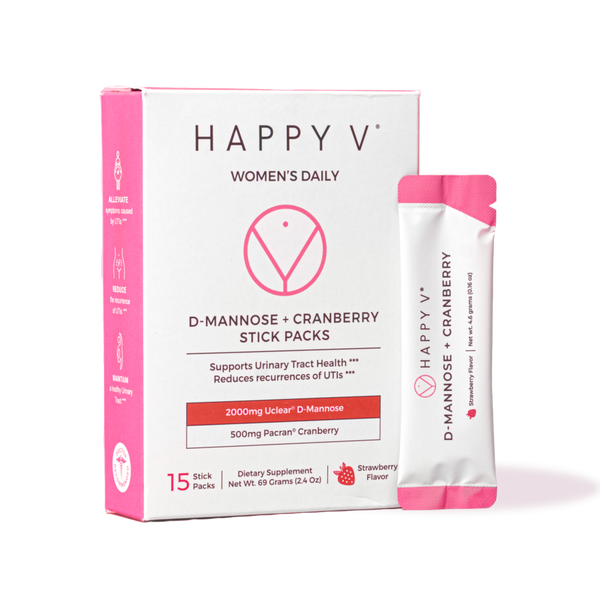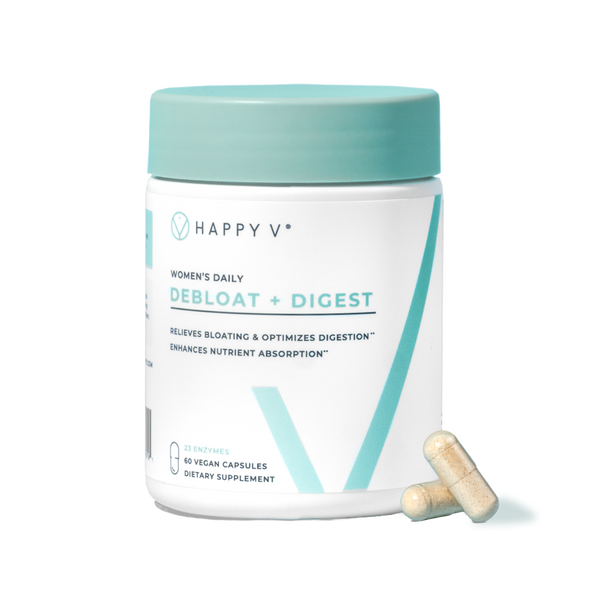- Fact Checked
- August 18, 2023
- 11 min read
Table of Contents
Studies suggest that chlorophyll has many potential benefits for humans. By considering including chlorophyll supplements in our daily routine, we can harness the power of this vital nutrient to support a healthier and happier version of ourselves.
So how much green pigment do you need to see these chlorophyll benefits? We’ve got answers.
How Much Chlorophyll Do You Need?
Like any other supplement, the amount of chlorophyll your body needs will depend on a variety of factors, including your age, weight, sex, and overall health status.
A study published in the Journal of Medicinal Food 2014 shed some light on chlorophyll dosage effectiveness. The study revealed that a 180mg dose was more effective for participants over 50 years old, while a 120mg dose showed better results for participants with a higher body mass index (BMI).1 This underscores the fact that the optimal dosage of chlorophyll varies depending on individual factors, as each person’s needs and bodies are unique.
Not to mention, your chlorophyll intake will also depend on the stage of life you’re in. For instance, if you’re pregnant or breastfeeding, you may require more chlorophyll due to the increased demands on your body. If you are expecting or currently breastfeeding, we highly advise you to consult with your healthcare professional before starting any new supplements.
So, how do we determine the appropriate dosage? Luckily, the FDA took care of that for us. According to the FDA, it is recommended that individuals take a daily dose ranging from 100 to 200 milligrams of chlorophyllin daily, with a caution not to exceed 300 milligrams.
Considering these factors and expert recommendations, it is crucial to prioritize purchasing a chlorophyll supplement from a reputable company that aligns with the FDA’s recommended dosage. Rest assured that our Liquid Chlorophyll supplement meets this criterion and stands out with its formulation consisting of the most natural and clinically proven ingredients, carefully selected for their effectiveness at the appropriate dosages.
Health Benefits of Chlorophyll
Chlorophyll is a green pigment found in green plants, and it plays a massive role in photosynthesis—a process crucial to every life form on Earth. Yeah.. no big deal.
When you think about it that way, it only makes sense that it’s beneficial for our livelihood, too. If it’s great for nature, it’s got to be great for us, right? And indeed, it is. With its antioxidant properties, immune-boosting capabilities, positive effects on digestive health, detoxification benefits, and contribution to skin health, it’s no wonder chlorophyll is a staple in all life forms! Let’s take a closer look at each of these incredible attributes of chlorophyll.
Antioxidant Properties
The antioxidant and anti-inflammatory properties of chlorophyll make it a beneficial nutrient for human health. As an antioxidant, chlorophyll helps protect our cells from damage caused by harmful molecules called free radicals. These free radicals can contribute to various health issues, including chronic diseases and aging.
By neutralizing free radicals, chlorophyll supports overall health and may help reduce the risk of certain diseases. Consuming chlorophyll-rich foods (like leafy and fibrous greens) or taking chlorophyll supplements can provide a natural and effective way to boost our antioxidant defenses and promote a healthier body.
Immune System Support
Your immune system is vital in defending your body against infections and maintaining overall health. Liquid chlorophyll can support your immune system by stimulating the production of white blood cells. These white blood cells are known as lymphocytes and neutrophils, key players in fighting infections.
This immune-boosting effect has been supported by a study conducted by the Journal of Human Kinetics involving 60 healthy individuals who took chlorophyll supplements for 12 weeks. The study demonstrated that chlorophyll supplementation increased the production of these crucial white blood cells.2 This also helps in wound healing.
Incorporating chlorophyll into your routine can enhance your immune response and potentially mitigate the risk of infections and other serious health issues.3
Digestive Health
Your gut microbiome is a complex ecosystem of microorganisms that live in your digestive tract and play a crucial role in maintaining good digestive health. Your body works so hard to keep you healthy, and adding chlorophyll to your diet and supplementation can support the growth of healthy bacteria in your gut. A study conducted in 2018 suggests that chlorophyll can increase the growth of beneficial bacteria such as Lactobacillus and Bifidobacterium, which can improve digestion and overall gut health.4
Detoxification
We know there is some stigma around detoxing, and we’re not telling you to restrict your body to certain foods to eliminate toxins. According to a study conducted by the National Academy of Sciences, when you take chlorophyll, it binds to harmful chemicals such as polycyclic aromatic hydrocarbons (PAHs) and heterocyclic amines (HCAs), which are found in charred meat and cigarette smoke. These chemicals can cause liver cancer and even pancreatic cancer.5
By binding to these toxins, chlorophyll’s detoxification capabilities prevent them from being absorbed in your body and reduce their harmful effects, potentially limiting the growth of cancer cells and boosting your immune system.
Skin Health
Yes, the same green pigment found in plants has also been found to support skin health and even aids with minimizing body odor!
When we talk about skin health, it goes beyond mere wrinkle prevention and anti-aging concerns. Your skin serves as a protective barrier, constantly exposed to UV radiation, pollution, and toxins, resulting in the encounter of free radicals that can impact the largest organ of your body.
Incorporating chlorophyll into your diet can significantly benefit your skin.6 Chlorophyll acts as a shield, safeguarding your skin from external aggressors while simultaneously enhancing skin hydration. It also contributes to optimizing your red blood cell count, promoting elasticity, reducing roughness, and diminishing the appearance of wrinkles.
In addition to these skin benefits, chlorophyll has been found to assist in minimizing body odor. Chlorophyll’s natural deodorizing properties can help neutralize unpleasant odors by reducing the odor-causing compounds produced by bacteria in sweat and bodily fluids. So by incorporating chlorophyll into our daily routines, we can improve our skin health and smell better.
Foods High in Chlorophyll
The great thing about chlorophyll is that you can take it in various supplemental forms or get the benefits of consuming chlorophyll-rich foods. So let’s build the perfect chlorophyll-rich grocery list for your next haul.
Leafy Greens
Everyone knows that leafy greens are great for your overall health. The high nutrient content, including vitamins, minerals, and antioxidants, makes this chlorophyll-rich food a match in heaven for our well-being.
Examples of leafy greens are spinach, kale, arugula, collard greens, mustard greens, parsley, and broccoli.
If you don’t particularly enjoy the taste of these vegetables, there are alternative ways to incorporate them into your diet. One option is to add them to soups, where they can absorb the flavors of the broth, creating a more palatable and enjoyable experience. By doing so, you can still benefit from their nutritional value while masking any undesirable taste.
Another approach is incorporating them into smoothies, where their flavors can be blended with other ingredients. You’d be shocked at how good a green goddess smoothie can be.
Fibrous Green Vegetables
Fibrous green vegetables are rich in chlorophyll because of their green pigment, which makes them a potent antioxidant that can protect your body against harmful free radicals that cause cellular damage and contribute to chronic diseases.7
Our favorite green veggies are beans, peas, asparagus, cabbage, bok choy, and zucchini. Eating fibrous leafy greens has also assisted in natural weight loss.
Herbs and Spices
Parsley, cilantro, mint, basil, oregano, and thyme all contain chlorophyll, providing flavor and potential health benefits to your dishes.
Sprinkle some parsley, oregano, and basil atop your pasta (and let’s be real—your pizza). Cilantro is fabulous on tacos. Dill is great in chicken salad. And honestly, all of these herbs and spices can make delicious homemade salad dressings and sauces! Not only will they bring out extra flavors, but you’ll also get the benefits of their medicinal properties.
Algae
As peculiar as it may sound, adding algae to your diet will also give you the chlorophyll your body needs. Algae are a diverse group of aquatic plants rich in green pigment. As much as we love a locally sourced item, we don’t suggest going to your nearest pond for algae. Instead, you can get algae from spirulina, chlorella, and seaweed, which can all be consumed as a food source!
Wheatgrass
Wheatgrass is a type of grass that is commonly consumed in the form of juice or powder. It’s high in vitamins, minerals, and antioxidants, making it a popular health food. Wheatgrass is also a rich source of (you know it!) chlorophyll. You can buy wheatgrass at most grocery stores or supplement stores.
Chlorophyll Supplements
We’ve touched on this a bit earlier, but chlorophyll supplements are another great option to get concentrated forms of chlorophyll in your system. You can take liquid chlorophyll from a dropper, as a pill, or even mix it with your water in the morning.
There are capsule-pill forms if liquid chlorophyll supplements aren’t up your alley.
We definitely recommend drinking chlorophyll water, as it is the easiest for on-the-go and to mix with green smoothies.
Before starting dietary supplements, speaking with a healthcare provider is always important, especially if you have pre-existing medical conditions or are already on other medications and supplements. Because chlorophyll supplements are often chlorophyllin supplements (a derivative of natural chlorophyll), it’s important to research and ensure you get the proper form of chlorophyll and dosage amount.
Clearly, if you’re reading this article, you are doing your due diligence to understand the proper ways to implement chlorophyll into your diet. (Go you!) That said, we have a quality-first approach in formulating all our products. Check out our Liquid Chlorophyll and see if it’s right for you!
https://www.instagram.com/p/Cs4bE32J4gK/
Risks and Precautions
While chlorophyll supplements are generally considered safe for most people, it’s essential to be aware of potential risks and take necessary precautions. Some individuals may experience mild side effects such as diarrhea, green discoloration of urine or feces, or allergic reactions.8
If you have certain medical conditions or are taking specific medications, it’s advisable to consult with a healthcare professional before starting chlorophyll supplementation.
Additionally, pregnant or breastfeeding individuals should exercise caution and seek medical advice before using chlorophyll supplements.
It’s always advised to follow the recommended dosage the manufacturer provides and choose reputable brands that ensure quality and safety. Also, it’s equally important to ensure the company you purchase through is adhering to the recommendations outlined by the FDA.
By being aware of these risks and taking necessary precautions, you can make informed decisions about incorporating chlorophyll supplements into your routine.
Green Urine or Feces
Green urine and feces can occur when the body excretes excess chlorophyll. Likely, your body won’t absorb all the chlorophyll you consume. The yellow color in urine is due to a pigment called urobilin, ordinarily present in small amounts in urine and feces.
When large amounts of chlorophyll are consumed, they can bind with urobilin and cause the urine and feces to appear green. Don’t be alarmed if this happens, though. It’s generally harmless but could indicate excessive chlorophyll intake and may warrant a decrease in supplement dosage.
Diarrhea and Nausea
We see this side effect often from supplements and medications, but it should always be noted when consuming something new. Diarrhea and nausea are potential risks associated with consuming too much chlorophyll.9
While chlorophyll is generally considered safe, consuming excessive amounts can cause digestive discomfort in some people. If this happens to you, lower your dosage or consult your healthcare professional to see the best course of action for your supplementation.
Allergic Reactions
Chlorophyll is generally safe, but some people may be allergic or sensitive to the compound. While allergic reactions to chlorophyll are rare, they can occur, so keep an eye out for hives, itching, swelling of the face, lips, tongue, or throat, difficulty breathing, and anaphylaxis in severe cases. These symptoms occur when the immune system overreacts to chlorophyll and triggers an allergic response. If this happens, stopping supplementing and seeing a doctor is crucial.
Final Thoughts
So, how much chlorophyll per day should you be taking? In short, the suggested amount is between 100-200 milligrams per day. You can take up to 300 milligrams, but not exceeding that daily dosage is recommended.
Naturally, chlorophyll is a powerful compound. It’s no surprise that supplementation can be so powerful, too. If you’re interested in exploring the many benefits of chlorophyll, try a month’s worth of our 100% natural, clinically-proven liquid chlorophyll and see how you feel! It may just make you a “healthier and happier” you!

Liquid Chlorophyll
Detoxifies the body and eliminate unwanted body odors.











